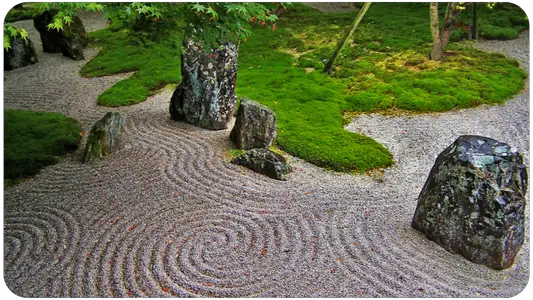Tara (from Sanskrit: तारा tārā, "savior", "protector"; Tibetan: སྒྲོལ་མ, Dölma) is a female deity of vajrayāna Buddhism where she is associated with the practice of tantric Buddhism in the form in which it has been preserved in Tibetan Buddhism.
Tara is the "mother of liberation" and represents the virtues of success in work and feats. Tara is a tantric deity whose practice is used by practitioners of the Tibetan branch of vajrayāna to develop certain inner qualities and understand the outer, inner and secret teachings on compassion (Metta) and emptiness (Shuniata).
Tara does not appear in the Japanese branch of vajrayāna Buddhism, Shingon Buddhism.
Tara is actually a generic name for a number of buddhas or bodhisattvas of similar appearance. They can be understood as different aspects of the same quality, in the way that bodhisattvas are often regarded as the metaphor for a Buddhist virtue.
Tara's main mantra is oṃ tāre tuttāre ture svāhā (in Sanskrit) or oṃ tāre tu tāre ture soha (in Pali, as pronounced by Tibetans and Buddhists who follow Tibetan traditions).
Main forms
The best known forms of Tara are:
श्यामतारा śyāmatārā (dark savior) known as Green Tārā, considered as the Buddha of enlightened activity and overcoming obstacles, overcoming obstacles during meditation or in life, is the most valued along with the White Tārā.
सिततर sitatārā (white savior) known as White Tara, represents compassion, long life, healing and serenity; also for carrying the chinta-chakra (wish-fulfilling wheel).
कुरुकुल्ला Kurukulla: known as Red Tārā, violent in appearance, associated with the power of attracting money and mates.
Black Tara: associated with power.
Yellow Tara: associated with wealth and prosperity.
Blue Tara or Ekajati: associated with transmutation of anger.
Chintámani Tara: a form of Tara widely practiced at the high level of Tantra Yoga in the Gelug school of Tibetan Buddhism, portrayed green and often merged with Green Tara
Khadiravaṇi-Tārā (Tara of the Acacia Forest3): who appeared to Nāgārjuna in the Khadiravani jungle of southern India and who is sometimes referred to as the "Twenty-second Tara".
In some Buddhist schools, 21 Taras are recognized. There is a practice text entitled In Praise of the 21 Taras, which all four schools of Tibetan Buddhism recite during the mornings.
Emergence as a Buddhist deity
Within Tibetan Buddhism Tara is considered a Buddha of compassion and action. She is the female aspect of Avalokiteshvara (Chenrezig) and in some stories about her origin she would have come from his tears. Tara is also known as a savior, as a celestial divinity who listens to the laments of beings experiencing misery in samsara.
The figure of Tara comes from Hinduism, where the devi Tara was one of countless mother goddess figures alongside Sarasvati, Laksmi, Parvati, and Sakti. In the 6th century, during the era of the Pala Empire, Tara was adopted into the Buddhist pantheon as an important bodhisattva.
It is no mere coincidence that she was introduced a few centuries after the appearance of the Prajñāpāramitā-sūtra in what would become the mahāyāna Buddhism of India.
It would seem that the feminine principle made its first appearance in Buddhism as the "mother of perfect wisdom" and later Tara came to be seen as an expression of the wisdom of perfect compassion.
However, sometimes Tara is also known as the "mother of the buddhas," which usually refers to the enlightened wisdom of the buddhas, so when approaching Buddhist deities, one must learn not to impose totally strict boundaries about what one deity covers as opposed to another deity.
They can all be seen as expressions of the play of manifest form energies dancing out of the vast emptiness. Be that as it may, Tara began to be associated with the maternal qualities of compassion and mercy. Undoubtedly for the common people who were Buddhists in India at that time, Tara was a more proximate deity deity.
The eyes of a deity representing wisdom as emptiness is a concrete thing to contemplate. Perhaps it is easier to praise a goddess whose eyes look outward with infinite compassion and who has a sweet smile. Tara then became very popular as an object of veneration and became integrated into the practice of tantra around the 7th century.
With the movement and influence of Indic Buddhism in Tibet, the veneration and practices of Tara became incorporated into Tibetan Buddhism. Regardless of whether she is classified as a deity, Buddha or bodhisattva, Tara remains very popular in Tibet and Mongolia.
Another reason for its popularity was that Tara became a Buddhist deity that could be invoked directly by laypeople, without the need or intervention of a lama or monk.
Thus, as Tara was accepted into the ranks of Buddhist bodhisattvas, she became popular both for ordinary people, as one to invoke in daily life; and for monks, as an entryway to understanding compassion and mercy as part of the path of personal evolution within Buddhism. (See also Guan Yin, the female aspect of Avalokiteshvara in Chinese Buddhism).
Tara as savior
Tara also embodies many of the qualities of the feminine principle, which is why she is known as the Mother of Mercy and Compassion. She is the source, the feminine aspect of the universe, which gives birth to cordiality, compassion and the alleviation of bad karma, experienced by ordinary beings during their cyclic existence.
She begets, nurtures, smiles at the vitality of creation, and has empathy for all beings as a mother does for her children.
As Tara the Green she offers succor and protection from all unfortunate circumstances that may be encountered in the world of samsara. As Tara the White she expresses maternal compassion and offers healing to beings who are hurt or damaged, either physically or psychologically.
As Kurukula or Red Tara she teaches discriminating awareness about created phenomena and how to transform raw desire into compassion and love. As Tara the Blue (Ekayati) she becomes a protector in the Nyingma lineage, expressing a fierce and wrathful feminine energy, whose invocation destroys all dharma obstacles and engenders good fortune and promotes spiritual awakening.
As a tantric deity
Tara as a tantric yoga deity can be traced back to the Padmasambhava period. There was a practice of Kurukula, Red Tara given by Padmasambhava to Yeshe Tsogyal. He asked her to hide it as treasure.
It was not until this century that a great Nyingma lama, Apong Tertön rediscovered it. This lama was reincarnated as His Holiness Sakya Trizin, the current leader of the Sakyapa doctrine.
A monk who had known Apong Tertön managed to retransmit it to His Holiness Sakya Trizin, and the same monk also gave it to Chagdud Tulku Rinpoche, who spread it to his Western disciples.
Spiritual practices
Sadhanas (spiritual practices) where Tara is the yidam (meditation deity) can be lengthy or brief. Most of them include some kind of prayer or homage to invoke her presence and refuge-taking prayers.
Then her mantra is chanted, followed by a visualization of her, either in her form or as a light of the corresponding color. Then more mantra and the visualization dissolves. This is followed by dedication of the merits gained by the practice to all sentient beings. Additionally there may be prayers of aspirations and long life for the Lama who originated the practice.
Many of the Tara sadhanas are considered initial practices in the world of Vajrayāna Buddhism, however what occurs during the visualization of the deity actually invokes some of the most sublime teachings of Buddhism.
In these cases, during the phase of Tara's creation as Yidam, she is seen with as much reality as any other phenomenon perceived by the mind. Through recitation of the mantra and visualization of her form in front of or above the head of the adept, one opens oneself to her energies of compassion and wisdom.
After a period of time the practitioner shares some of these qualities, becomes imbued with his being and all that it represents. At the same time all of this is seen as emanating from emptiness and having a translucent quality like a rainbow.
So, many times there is a visualization of oneself as Tara. One simultaneously becomes inseparable from all one's good qualities while, at the same time, realizing the emptiness of oneself as the Yidam and oneself as ordinary "I".
This occurs in the final part of the practice. One dissolves the created form of the deity and at the same time realizes how much of what one considers oneself as "I" is a creation of one's own mind and lacks inherent long-term existence.
This part of the practice is preparing the practitioner to be able to confront the dissolution of self during death and to be able to approach through various stages of meditation to Emptiness, the realization of ultimate truth as a vast unfolding of emptiness and light.
At the same time the recitation of the mantra has been invoking the energy of Tara through its Sanskrit "seed sound" purifying and activating certain psychic centers in the body (chakras).
This unties the knots of psychic energy that were binding the practitioner and preventing him from developing a vasra body, which is necessary to be able to progress to more advanced practices and deeper states of realization.
So even in a simple Tara sadhana a series of invisible events, both internal and external, are taking place and there are many works such as Divine Yoga (by the Dalai Lama), which explore all the ramifications of working with a yidam in tantric practices.
The results of doing such Tara practices are many. One of them is to reduce the forces of delusion in the form of negative karma, disease, klesha afflictions ('pains') and other obstacles and obscurations.
The mantra helps to generate Buddha-mindedness (bodhi chita) in the practitioner's heart and purifies the psychic channels (nadis) in the body allowing a more natural expression of generosity and compassion to flow from the heart center.
By experiencing the perfect form of Tara one becomes aware of one's own perfect form, that is, the intrinsic Buddha nature which is obscured by obscurations and our inclination to see dualistic phenomena as true and permanent.
As Chagdud Tulku Rinpoche wrote in his "Introduction to the sadhana of Red Tara", "Tara is the impeccable expression of the Buddha nature:
Tara is the impeccable expression of the inseparability of emptiness, awareness and compassion. Just as we look into a mirror to see our face, meditation on Tara is a means of seeing the true face of our mind free from any trace of illusion.
Chagdud Tulku Rinpoche
Prayers to Tara
There are many prayers that can be recited to invoke Tara, some examples are:
Noble Tara, I beseech you, both you and your entourage,
that you remember with love your promise from the past
and release my fears and those of all beings.
Dispel the dark mentality in the face of adversity.
May harmonious circumstances flourish
and grant us the ordinary and supreme siddhis ['mental powers'].
om tare tu tare ture sojá.
Tara
Feminine emanation of the Buddha Avalokiteshvara, pointing out that women have the same potential as men to attain enlightenment.





